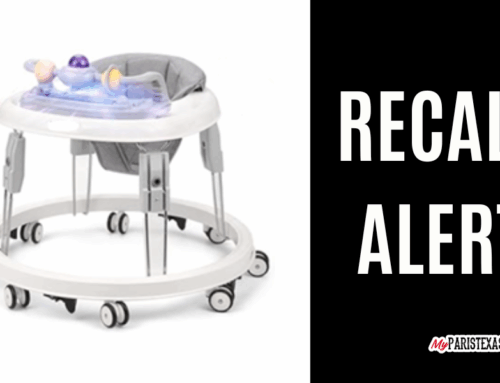The Renewables Industry’s New Message: It’s the Demand, Stupid
June 6, 2025

As the renewable energy industry fights for relief from the House reconciliation bill’s harsh tax credit phaseouts, its members have coalesced around a dire and pragmatic message: America needs electricity, we’re the only ones who can provide it quickly, this bill will make that harder — and it’s electricity consumers who will have to pay the price.
“Now we have a different paradigm,” Jim Murphy, the chief executive officer of the energy developer Invenergy said Thursday at a conference hosted by the renewables trade group ACORE. Whereas in previous decades renewables largely replaced retiring fossil plants on the grid, today, “we need it all, and we need it all as fast as we can get.”
Even if customers want gas-fired power plants, the developers that build them likely can’t get them up and running until near the end of the decade. “We’re getting a lot of customer inquiries for gas-fired, as well,” Murphy said. “We can’t deliver that immediately the way we can deliver renewables immediately. 90% of what we have in the queue is renewables. Gas projects won’t be ready until the end of the decade.”
Sitting beside Murphy on the same panel, Sandhya Ganapathy, chief executive of EDP Renewables North America, described renewable deployment in the coming years as “not about ideology,” or even “one technology being better than the other.” Instead, “this is about pragmatism,” she said. “What does it take for the economy to be resilient? What does it take for the economy to be dominant out there?”
The answer, Ganapathy said, was whatever pushed electrons onto the grid fastest.
I heard the same idea repeated over and over on the panels I attended and from the people I spoke to: What makes renewables matter is how they serve the grid’s needs now, not how they help reduce emissions.
“For 25 years, what has happened in this industry is the retirement of coal plants, and to a lesser extent gas plants, and then the replacement of that capacity by renewables. That’s really the industry that we’ve all been part of,” Ted Brandt, the chief executive of Marathon Capital, said on Wednesday. “Right now we’re at an inflection point where we’re running out of retirements.”
The big buyer is a large technology company looking to power its data centers, Brandt said, and it’s willing to pay up.
“What hyperscalers really believe is that the acute constraint to AI and cloud is all about power,” Brandt said.
Though demand is high, there are roadblocks and costs that developers have to deal with even before worrying about the future of the Inflation Reduction Act — tariffs, high demand for scarce components such as transformers, interconnection and permitting delays. With tax credits of at least 30% (and often higher) possibly going away, the only way to solve the equation between high demand and high development costs is prices going up, Debbie Harrison, a partner at McDermott Will & Emery, told me.
One might wonder, then, exactly what the developers are so worried about. After all, if there’s rising demand for your product, why do you need a subsidy?
When I put this question to ACORE Chief Executive Ray Long, he emphasized that such a long pipeline of projects in response to demand from technology companies and utilities has accumulated in less than three full years since the IRA’s enactment.
“We have a two-and-a-half-year-old set of policy that was passed by the House and the Senate, signed by the president, that enabled and said to investors — and developers, and manufacturers, and everybody else — use these tax credits because we want you to come in and build and invest in everything that you’re doing,” Long told me.
“We need to be in a place in the United States where policy actually means something, that the people who are spending the money and doing all this can rely on,” Long went on. “The IRA is going to change. Everybody knows that if it’s going to change. It needs to be done in a responsible and balanced way that does not just discard all the investment.”
In the near term, moving up the deadline to qualify for clean energy tax credits to 60 days after the signing of the bill, as proposed in the House version, could cause a rush of construction starts. But that’s a thin silver lining, industry executives and analysts argued. Many projects simply may not happen at all.
Projects that would be eligible for tax credits “currently make up the vast majority of planned U.S. utility-scale electricity capacity additions,” analysts from Evercore wrote in a separate report released Wednesday. If the credits are “both rapidly terminated and rendered unworkable,” first by early phaseout and then by foreign entity of concern provisions (more on those in a minute), it would mean that many projects no longer pencil out economically, thus endangering “the United States’ ability to affordably meet growing electricity demand from data centers and other end users.”
Citing data from the U.S. Energy Information Administration, the Evercore analysts estimated that over 80% of the planned capacity additions could be eligible for clean energy tax credits, with 150 gigawatts of solar, battery, and wind projects planned but not yet under construction.
The foreign entity of concern provisions require tax credit recipients to isolate their business relationships and supply chains from a handful of U.S. adversaries, most notably China. This “introduces massive complexity” and is “very likely unworkable,” the Evercore analysts said. The FEOC provisions “would throw ongoing projects into uncertainty around post-2028 credit eligibility.”
The requirement to eliminate not just all Chinese companies, but also all Chinese “influenced” companies from the renewables supply chain would create numerous points of potential noncompliance for denying tax credits. And unlike the foreshortened timelines for starting construction on new projects in the House bill, the FEOC rules could mean “immediate uncertainty” around whether existing generation will remain eligible for credits they’d planned to claim through 2028 and beyond.
Executives at the ACORE conference were properly alarmed.
“FEOC is written so broadly because of components and subcomponents,” Murphy said Thursday. “The supply chain can not support that, and won’t be able to support that for several years. It’s just an unworkable provision.”
Search
RECENT PRESS RELEASES
Related Post



